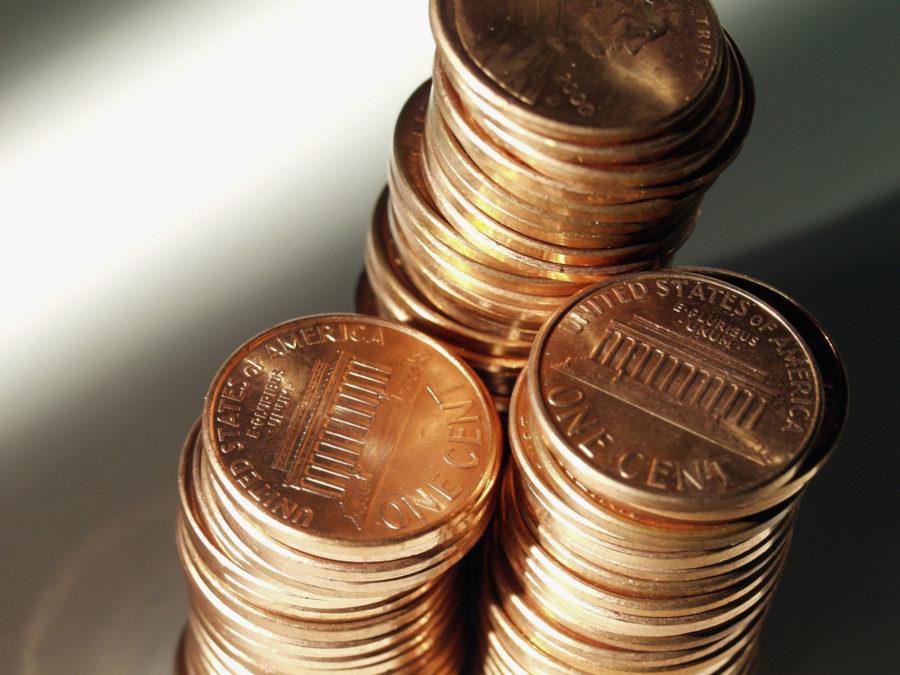A 'penny' for a thought
High angle view of a stack of American coins
Dec 1, 2015
Last updated on June 14, 2016 at 08:34 a.m.
“If a penny is heads-up on the ground, I usually pick it up for good luck,” she said.
Although she frequently encounters the one-cent coin on her way in and out of her apartment, it never crossed her mind why Jeff Gore, MIT physicist, would want to stop the mint of the United States penny.
“Why are you trying to get rid of it?” Huynh asked.
Get The Daily Illini in your inbox!
According to Citizens to Retire the U.S. Penny, an organization founded by Gore, “it makes ‘cents.’”
The costs, monetary and otherwise, far outweigh the benefits. Stopping its mint could save this country time and money. In 2011, it cost 2.4 cents to make a penny, and with five billion pennies minted that year, it cost $120 million to produce $50 billion of circulating currency.
Huynh wondered, “Why do you care?”
“There is obviously no connection to my research,” Gore said. “But I have always been annoyed with pennies. I read a study (by Walgreens) about how much time we waste, saying there is an average waste of 2 seconds per transaction. With all the transactions in all the stores in America, that adds up.”
With Citizens to Retire the U.S. Penny, Gore is trying to convince people that there are substantial costs associated with continuing the use of the penny and hopefully get more people annoyed with its mint.
Citizens like Huynh have legitimate concerns: “Could it cause an inconvenience?”
To answer these concerns, Gore turns to data from several countries who have discontinued the penny from their mint. Ridding the penny did not raise prices, decrease charitable donations or cause their economies to crumble.
The US has already stopped minting a coin of little use. The half-penny’s mint was stopped in 1857, when it was worth what a dime is worth today. At the time, there was little to no significant opposition.
One of the biggest challenges Gore faces is the group Americans for Common Cents.
“Their website looks like a non-profit, but it is just a lobby group funded by the zinc industry,” Gore said.
According to the United States Mint, the penny is composed of 97.5 percent zinc.
Another opponent is the sentiment associated with the penny. Many politicians from Illinois, the Land of Lincoln, are determined to keep the coin alive. However, those worried about Lincoln being forgotten should turn to the five-dollar bill, which is a currency unit that still has significant purchasing power.
“The purchasing power of the penny in 1940 is 17 times what it is today,” Gore said. “It is on the side of being worthless.”
John Green, author of “Paper Towns” and “Looking for Alaska”, supports the cause to stop the mint of the one-cent coin.
“If Abraham Lincoln were alive today, he would say, ‘Why is my face on a coin that is worth 1/26 of what a penny was worth when I was president?’”






